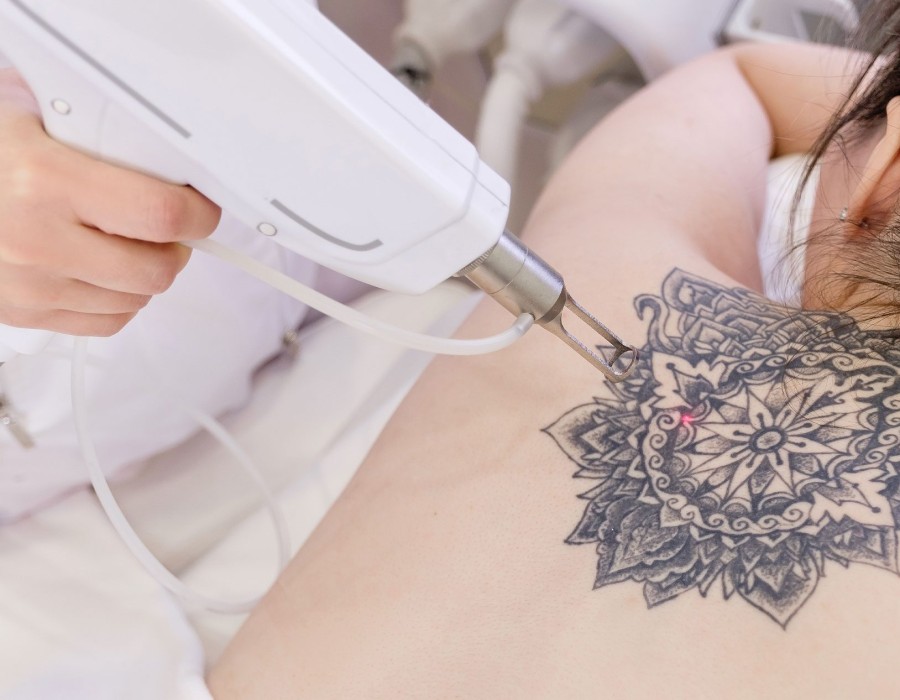Have you ever regretted a tattoo that once seemed like a great idea? You're not alone. Millions of people seek ways to erase their ink, and laser tattoo removal has become the go-to method for fading or completely removing unwanted body art. But how exactly does this high-tech process work? In this article, we'll dive into the science behind laser tattoo removal, breaking down the technology in simple terms. Whether you're curious about the Tattoo Removal Treatment process or considering it yourself, understanding the mechanics can help demystify this popular procedure.
Understanding Tattoos: Why They're Permanent
Before we explore how lasers remove tattoos, it's essential to grasp why tattoos stick around in the first place. When you get inked, a tattoo artist uses a needle to inject pigment particles deep into the dermis, the second layer of your skin. These ink particles are too large for your body's immune system to clear away naturally, so they become trapped, creating that lasting design.
Your skin's natural healing process encapsulates these foreign particles with collagen, making the tattoo appear permanent. Over time, some fading might occur due to sun exposure or aging, but without intervention, the ink remains embedded. This is where laser technology for tattoos comes in, targeting those stubborn pigments without damaging the surrounding tissue.
The Core Principle: Selective Photothermolysis
At the heart of laser tattoo removal is a scientific concept called selective photothermolysis. This term might sound complex, but it simply means using light (photo) to generate heat (thermo) that destroys (lysis) specific targets selectively.
Lasers emit concentrated beams of light at precise wavelengths, which are absorbed by the tattoo ink particles. Different colors of ink absorb different wavelengths— for example, black ink absorbs most wavelengths easily, while green or blue might require specialized settings. The heat from the laser shatters the ink into tiny fragments, allowing your body's lymphatic system to gradually flush them out. This process mimics how your immune system handles invaders, but with a high-energy boost from the laser.
Types of Lasers Used in Tattoo Removal
Not all lasers are created equal when it comes to breaking down tattoo pigments. Advances in laser technology have led to more effective options. Here's a look at the most common types:
Q-Switched Lasers: These are the traditional workhorses of tattoo removal. They deliver energy in nanosecond pulses (billionths of a second), ideal for shattering larger ink particles. Common subtypes include Nd:YAG for dark inks and Ruby for greens and blues.
Picosecond Lasers: A newer innovation, these lasers fire pulses in picoseconds (trillionths of a second), making them faster and more efficient. They can handle stubborn colors like yellow and red better, often requiring fewer sessions.
Combination Systems: Some devices blend multiple wavelengths, allowing technicians to customize treatments for multicolored tattoos.
Choosing the right laser depends on the tattoo's colors, depth, and your skin type, ensuring the energy targets the ink without harming nearby cells.
Step-by-Step: The Tattoo Removal Process
Curious about what happens during a session? The laser tattoo removal procedure is straightforward but rooted in precise science. First, the area is cleaned, and protective eyewear is provided. A cooling device might be used to minimize discomfort.
The laser handpiece is then passed over the tattoo, delivering short bursts of energy. Each pulse feels like a rubber band snap, but topical numbing can help. The light penetrates the skin, heating the ink particles until they fragment. White frost or slight blistering might appear immediately, signaling the ink's breakdown.
Post-treatment, your body takes over. Macrophages—your immune cells—engulf the shattered pigments and carry them away via the lymphatic system. Sessions are spaced 6-8 weeks apart to allow healing, with full results visible after several treatments. This gradual approach ensures safer, more effective outcomes.
Factors Influencing Laser Tattoo Removal Success
Several elements play a role in how well laser technology erases your ink. Tattoo age matters—older ones often fade easier as some ink has already dispersed. Location on the body affects results too; areas with better circulation, like the torso, respond faster than extremities.
Skin tone is crucial, as darker skin requires careful wavelength selection to avoid pigmentation changes. Ink quality and density also impact the process—professional tattoos with dense pigments might need more sessions than amateur ones. Lifestyle factors, such as avoiding sun exposure, can enhance healing and prevent complications.
Potential Side Effects and Aftercare
While laser tattoo removal is generally safe, it's not without risks. Common side effects include redness, swelling, or temporary skin discoloration, which usually resolve within days. In rare cases, scarring or infection can occur if aftercare isn't followed.
To minimize issues, keep the treated area clean, apply recommended ointments, and protect it from sunlight. Hydration and a healthy diet support your body's natural elimination of ink fragments, speeding up recovery.
Conclusion
Laser tattoo removal represents a fascinating blend of physics, biology, and technology, transforming regretted ink into a blank canvas. By harnessing light to shatter pigments, this method offers a non-invasive way to rethink your body art. As research advances, expect even faster, more precise lasers on the horizon.





Comments